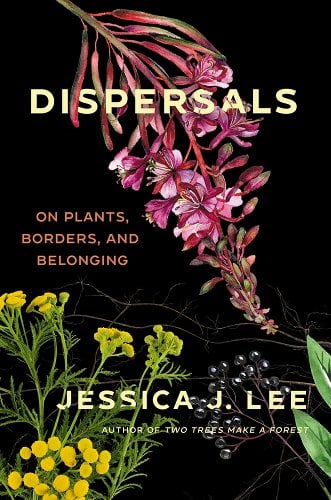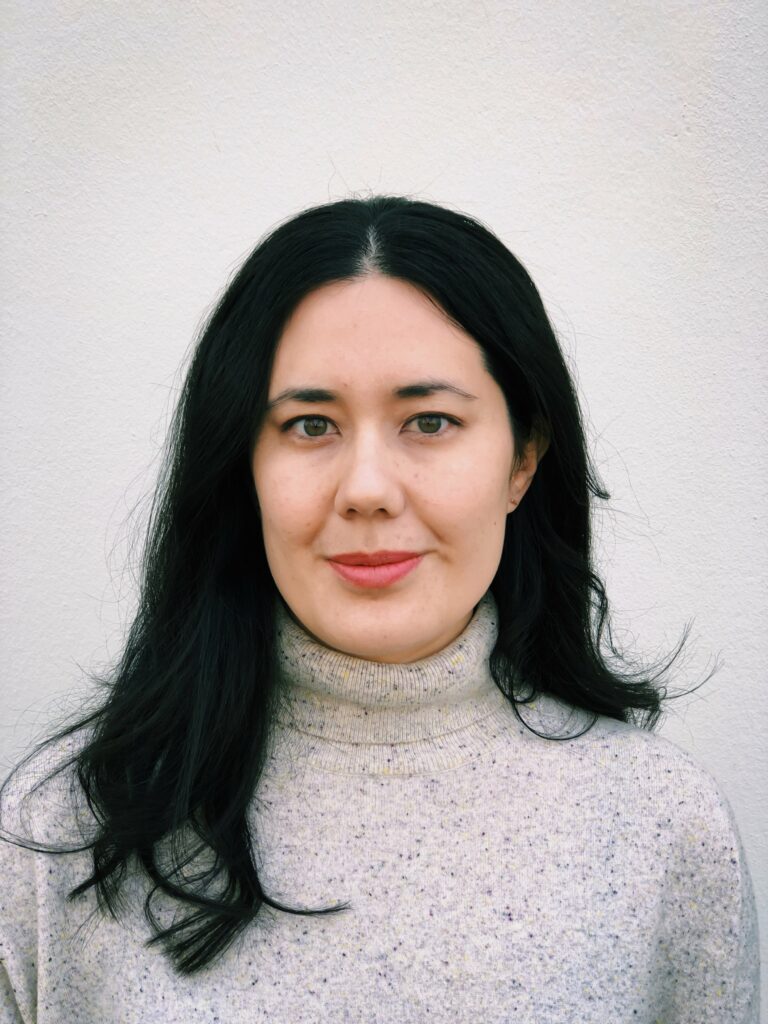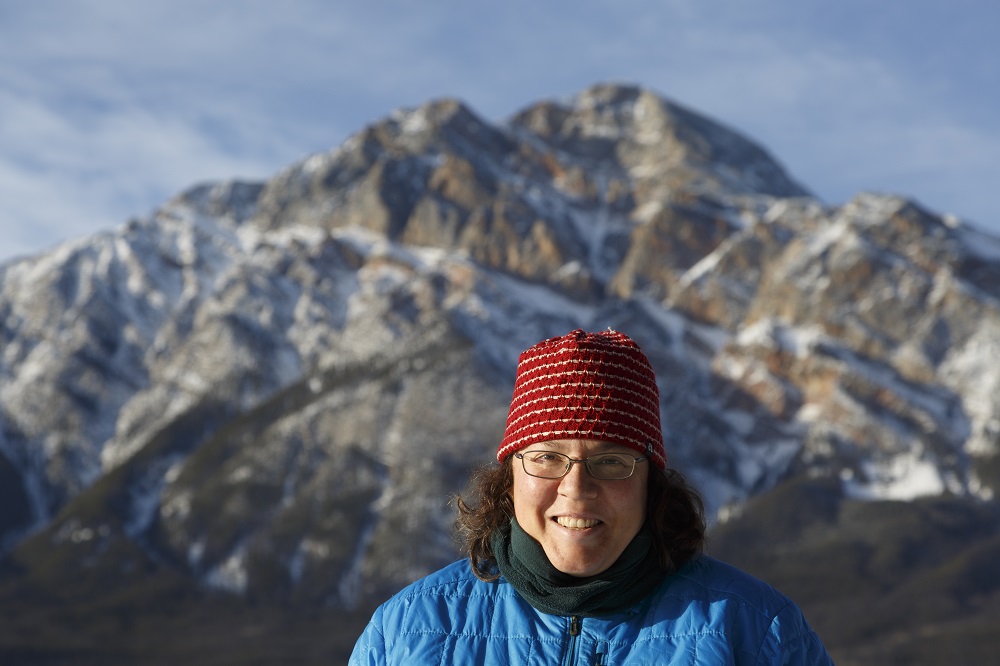Interview by Sarah Boon
 In Dispersals: On Plants, Borders, and Belonging, Jessica J. Lee explores the transitory nature of plants, their travels across the world, and their uses in different cultures. This ties into her own transitory life over the period in which she was writing the book. She examines the use of the word ‘weed’ and unravels our labelling of plants as native or non-native, by exploring the environmental history of plants like tea and mangos. The book contains 14 essays that address migration—both hers and her parents and grandparents—and that of plants and weeds that have become part of our everyday vernacular.
In Dispersals: On Plants, Borders, and Belonging, Jessica J. Lee explores the transitory nature of plants, their travels across the world, and their uses in different cultures. This ties into her own transitory life over the period in which she was writing the book. She examines the use of the word ‘weed’ and unravels our labelling of plants as native or non-native, by exploring the environmental history of plants like tea and mangos. The book contains 14 essays that address migration—both hers and her parents and grandparents—and that of plants and weeds that have become part of our everyday vernacular.
She is also the author of Turning, a book that chronicles a year of wild swimming in lakes and streams around Berlin, even in the middle of winter when she has to bring a hammer to break the ice. Her second book, Two Trees Make a Forest, unearths the history of her maternal grandparents as they moved between China and Taiwan, which she visits to meet family and learn more about her roots.
I conversed with Jessica over email in the rainy days of late February. This interview has been edited for length and clarity.
Sarah Boon: How did you come up with the title for your book? I can draw my own inferences, but I’d like to hear the story from you.
Jessica J. Lee: I puzzled over the title for a while — I wanted a word that would capture the idea of movement not just of plants but of people, and I didn’t want something too explicitly obvious. So when I began thinking about seeds and spores and how they ‘dispersed’, the idea for Dispersals came about.
SB: I love this line “Tea was the interlude in conversations where a person didn’t quite know what to say.” It’s clear that tea was an important part of your family rituals — both Taiwanese and British. Is that how you chose the plants and seeds you include in the book, by their personal meaning?
JJL: Yes, absolutely — for the most part, I picked plants that had a personal connection, that I felt drawn to write about at length. So while the book offers a glimpse at the plant kingdom and the ways we’ve shaped — and been shaped by it — it is never a total, perfect picture of the world. The stories I tell here have a kind of global scale, but were chosen in part because of their personal resonance.
SB: You mention at the beginning of the book that you moved between four houses, two countries, and two cities during the time of writing this book. It’s clear how tightly tied your lived experience (and that of your parents and grandparents) is to the trajectories of the plants featured in your book. Did you come up with this book idea because of your migratory pathway, or had you already started writing the book when you ended up becoming a migrant yourself?
JJL: I actually started writing the essays for the book before we moved away from German in 2020, in the fall of 2019. After working on my second book, I’d been left with this lingering thought about how the plants we call native or non-native were really fuzzy things that shapeshifted depending on where they were found, so I started writing the essays for a column in Catapult magazine. Only after a year of writing them did I realise they were inching towards a book.
SB: How did you keep writing during what must have been a long period of upheaval and grief at having to give up your ideas of ‘home’ in England?
JJL: Honestly — keeping writing was the hardest part of working on this book, not just because of the upheaval but because I had a newborn baby. For me, the biggest thing that helped me do it was letting go of what I thought my writing practice needed to look like. Huge swathes of the book were actually written as text messages to myself while I sat nap-trapped in a dark room with my baby nursing.
SB: What was it like to have to leave Cambridge and return to Germany because of the housing situation? Is this now ‘home’ for you — and your family? Or do you still see the UK as ‘home,’ despite Brexit and the housing situation?
JJL: It was a really unexpected and quite traumatic experience at the time, heightened because of the speed of the move and the fact we had only just had our daughter a few months before. But my sense when we returned to Germany was that I didn’t want to do this move again — that if we were to come back, it would need to be in order to make a home. Of course, I thought that when we returned to the UK a few years earlier, so who can say for sure! But life in Germany has felt, on some level, less precarious than life in the UK. And that feels very important to me.

© Ricardo A. Rivas 2019
SB: You talk about how your British grandparents shaped your view of the ideal home/landscape, specifically the paint-by-numbers project you did of a cottage and garden. Do you think that, if they had come from another country, say France or Italy, that that would have been imprinted on you instead of Britain?
JJL: I think the British ideals of landscape were powerful not just because of my familial connection, but because of the ways these ideals penetrated all the way through life growing up in a commonwealth country. I’ve had conversations with other writers who’ve grown up in other parts of the commonwealth and we’ve all noticed that similar feeling: that daffodils and thatched cottages and hollyhocks somehow became a part of our cultural imaginations, even if we were from far across the world.
SB: You discuss plants that are ‘invasive’ and those that are considered ‘native,’ and ruminate on the fact that these words “drift uncomfortably close to the notions of purity.” What words do you use for unwelcome vs. welcome plants? Or do you not see them as unwelcome, just plants that “obstruct our plans, or our tidy maps of the world,” as you quote Richard Mabey?
JJL: I’ve tried to label plants less, I suppose, or to be more specific in my naming: to say, for example, “that’s rosebay willowherb and it thrives in disrupted, neglected places,” rather than simply saying “that’s a weed.” I don’t have a garden now, just a little balcony, but even so I try not to fret about any little plants that make an attempt to grow in my window boxes unbidden — I let them grow until I can figure out what they are, then wonder how they got there!
SB: You mention that the seaweed wakame has a ‘global non-native range,’ meaning it is “everywhere but is still out of place.” How do you think we should deal with these kinds of species – like the heather star moss that’s colonizing land rapidly across the globe. Do we just let them be, and accept them as part of the ecosystem? How do we address their tendency to crowd out native plants and reduce biodiversity?
JJL: I don’t know if I have a real solution — I would tend to leave that for ecologists – but I do think having more nuanced conversations around impact and harm rather than seeking general categorisations like “non-native” would be more helpful. But this is happening within progression conservation circles and amongst some ecologists! Which is heartening to see.
SB: This book struggles with the question of what makes a species invasive vs. non-invasive, given domestication, exploration, and colonization. What do you think this means for re-wilding projects, of which many are underway worldwide. How do they select a baseline level to which to return a landscape?
JJL: Honestly, I think rewilding as a philosophical project is really fascinating and not unproblematic — but this is something that applies to all forms of conservation on some level. During my doctoral work, I looked at visions of the ideal landscape for Hampstead Heath in London, and how those visions and the ways they shaped conservation really failed to grasp the complexity of historical change in even the past few centuries. So I think beginning with a really philosophical, historically-informed interrogation of that baseline is hugely important. There’s no single answer that can have a global application.
SB: You play around with form between chapters. The first chapter jumps between timeframes but is about wild swimming and water (your mom’s pond), while the chapter on the USDA’s exploration arm is written tongue in cheek with headings of “Portrait of the Explorer” and “A Vision of the World.” Then there’s the sour fruit chapter, which reads like a series of information snippets, and doesn’t have the same lyrical flow as the other chapters. The final chapter is written as a letter to your daughter, with definitions tied into each individual section. Tell me about your experiments with form, and what led you to undertake these experiments with these particular chapters.
JJL: After writing two full-length nature memoirs, this book felt to me like an opportunity to reset my creative practice a bit and play more than I have in the past. And because each essay was distinct, I could decide what I thought suited the essays best. A few of them I puzzled over for a long time — Sour Fruit ended up as fragments because I wanted to capture that bitty, sometimes incomplete quality of memory. Synonyms for “Mauve” ended up as a kind of thesaurus when I realised I was spending all my time cataloguing purples: and only once I’d settled on that form did I travel to the garden where the book closes and find hundreds of synonyms for purple! That was the moment I realised, “OK, this is the right shape, keep going.”
SB: What do you hope readers will take away from your book?
JJL: The main thing is to think carefully about the power of language – and to recognise how deeply entwined our human stories are with the more-than-human world. That there is no pristine nature or wilderness – no Eden for us to return to. I think if we can accept that and look forward, that’s a good starting point.
“The main thing is to think carefully about the power of language — and to recognise how deeply entwined our human stories are with the more-than-human world.” — Jessica J. Lee
SB: What are you working on next?
JJL: I’m very slowing inching my way back into thinking about freshwaters: about biodiversity and global conservation and how we fail to adequately imagine freshwaters and their importance. But that’s a long project and might be some time!
Jessica J. Lee is a British-Canadian-Taiwanese author, environmental historian, and winner of the Hilary Weston Writers’ Trust Prize for Nonfiction, the Boardman Tasker Award for Mountain Literature, the Banff Mountain Book Award, and the RBC Taylor Prize Emerging Writer Award. She is the author of three books of nature writing, Turning, Two Trees Make a Forest, and Dispersals (forthcoming) and co-editor of the essay collection Dog Hearted. Her first children’s book (with illustrator Elaine Chen), A Garden Called Home, is also forthcoming. She has a PhD in Environmental History and Aesthetics and was Writer-in-Residence at the Leibniz Institute for Freshwater Ecology in Berlin from 2017–2018.
 Sarah Boon has been published in Aeon, LitHub, LA Review of Books, Undark, Orion Magazine, and other outlets. Her science memoir, Meltdown: The Making and Breaking of a Field Scientist, is coming out in spring 2025.
Sarah Boon has been published in Aeon, LitHub, LA Review of Books, Undark, Orion Magazine, and other outlets. Her science memoir, Meltdown: The Making and Breaking of a Field Scientist, is coming out in spring 2025.


